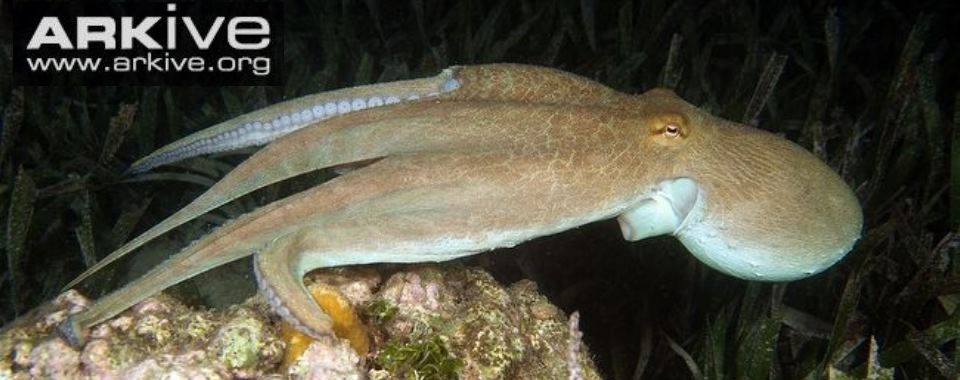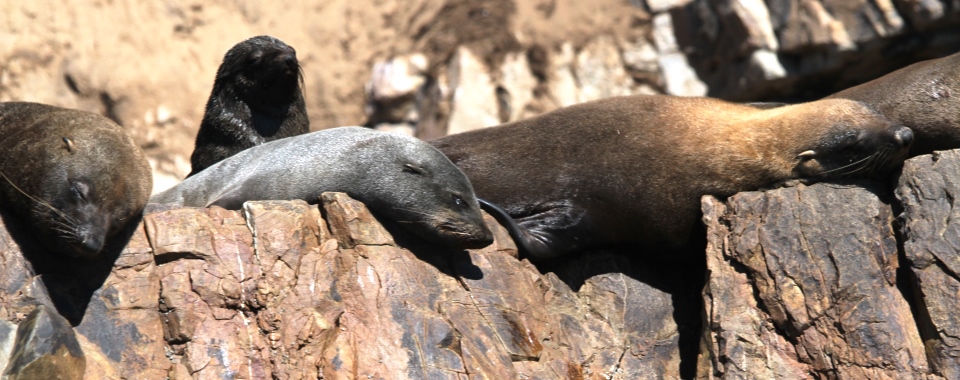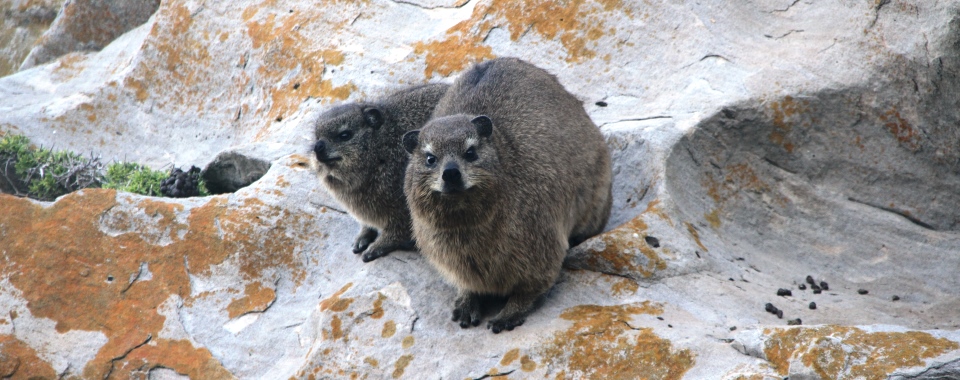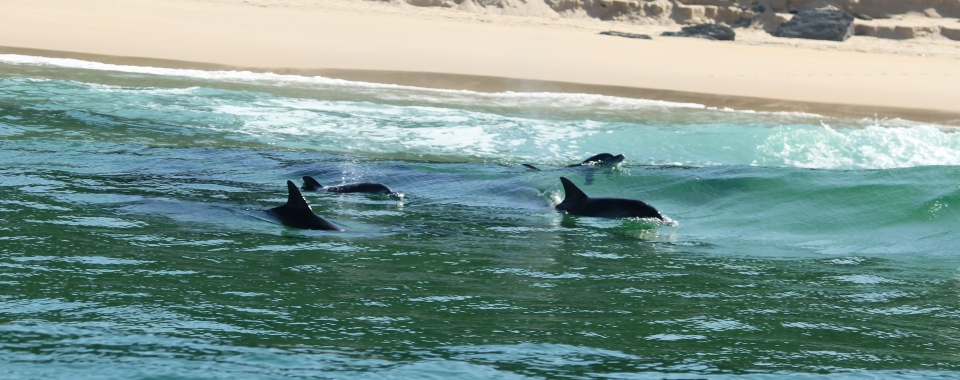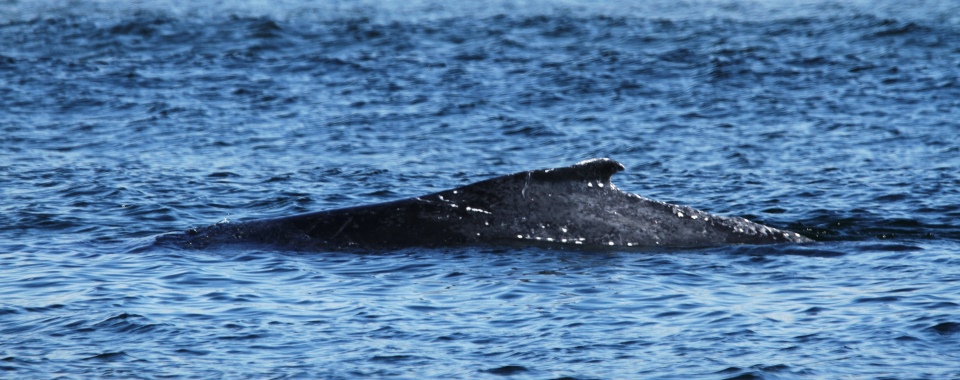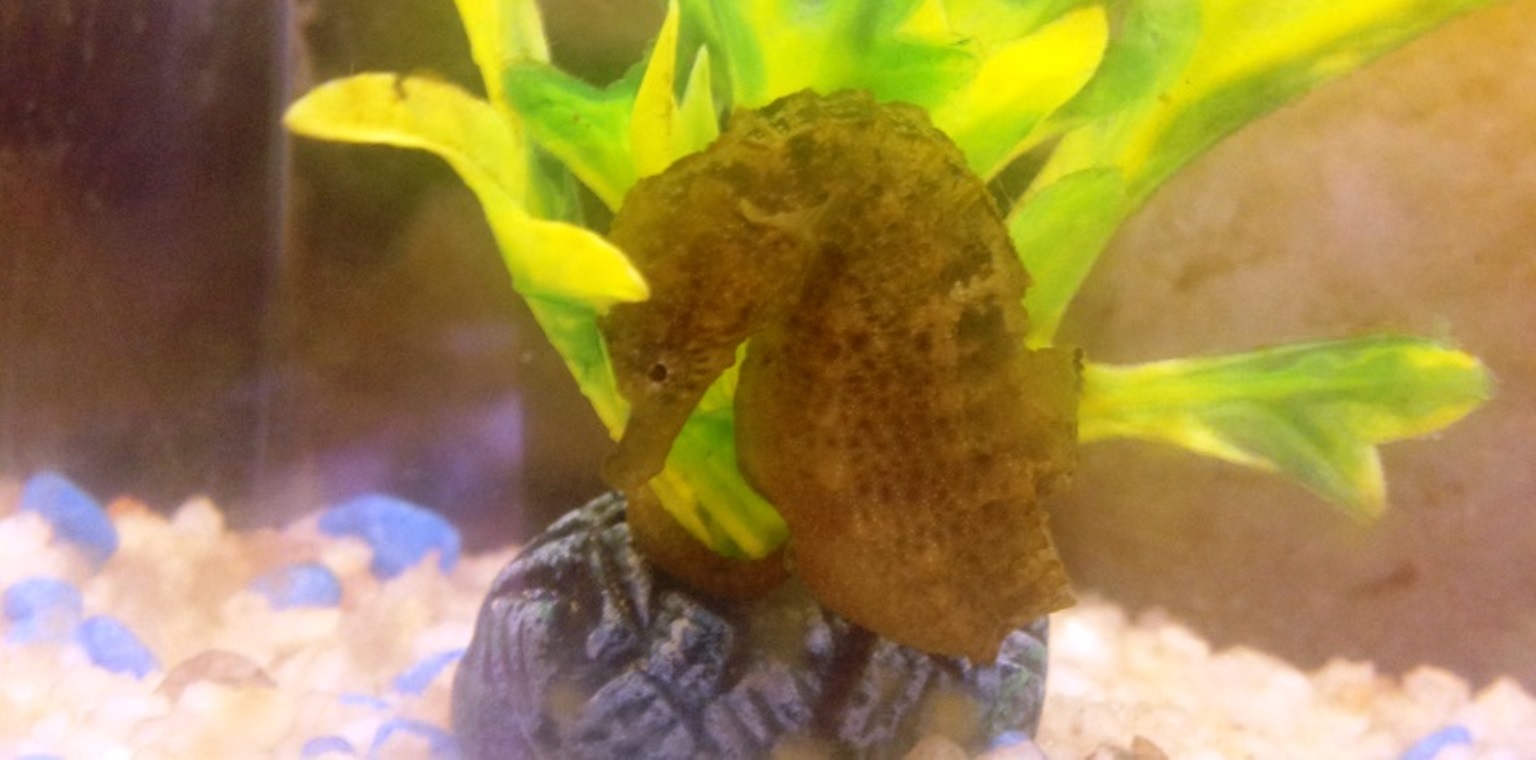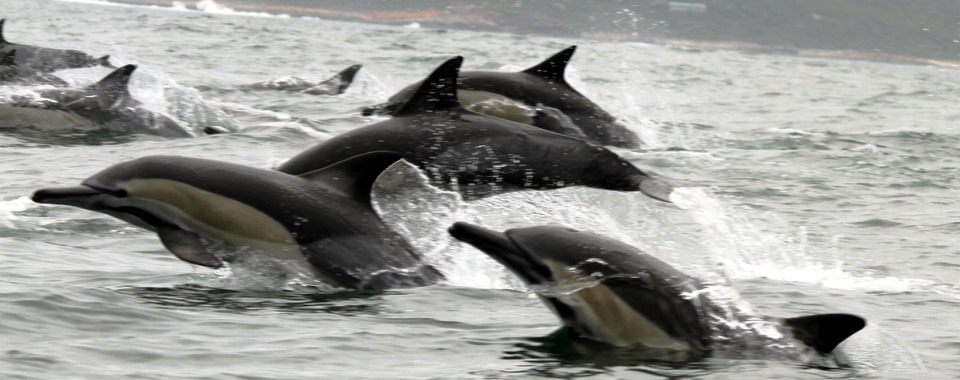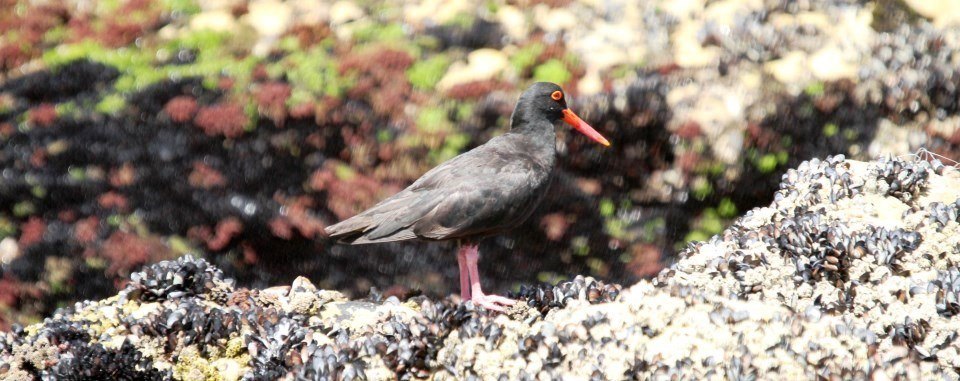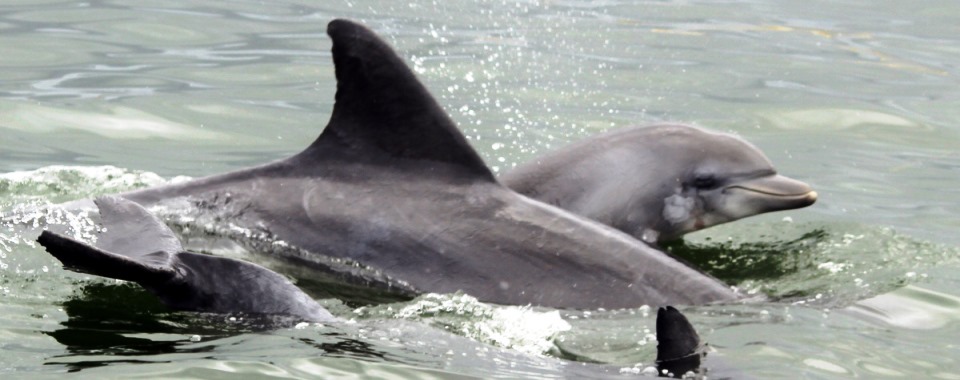Bryde’s whales are South Africa’s only resident whale species that doesn’t migrate south in summer. During the past week our guests have been extremely lucky to have seen a few Bryde’s whales during our boat trips. They are usually very shy and normally only surface a few times before taking a dive and swimming away READ MORE
Octopuses belong to the phylum Mollusca which also includes mussels, snails and nudibranchs .They belong to the class Cephalopoda (head-footed) together with squids, cuttlefish and nautilus. Cephalopods have well developed eyes and a ring of tentacles surrounding their mouth. Cephalopods are key species in the food chain because they are an important food source for READ MORE
When going on a trip with Ocean Blue we visit the Cape fur seal colony which is situated on the eastern side of the Robberg Peninsula. The guests enjoy watching the seals playing in the water or sleeping on the rocks. Do you know that when seals sleep they will occasionally open one eye to READ MORE
Dassies are the Afrikaans and most commonly name used for a small mammal, Procavia carpensis (Latin) in South Africa. Their Latin names means the first guinea-pig (Procavia) belonging to the cape (carpensis). They are known in english as a Rock Hyrax and got that name from the Hebrew word shaphan that means “the hidden one”. READ MORE
The bottlenose dolphins encountered on our boat trips gave the guests a great show, playing in the surf on Keurbooms beach. While some animals jumped next to the boat, others were travelling in a relaxed manner in the surf zone. Did you know that bottlenose dolphins are the most commonly caught species for dolphinariums because READ MORE
We had an amazing experience today on our 9.30 boat trip where we had a juvenile Humpback whale swimming past the Lookout rocks towards the Robberg Peninsula.
Sea horses (hippocampus) are fish that can be recognized by their horse-like head that is right angled to the body and a muscular tail that they use as an anchor. Sea horses are well camouflaged and are generally found holding onto sea grass stems, coral heads or artificial reefs where they sit and ambush their READ MORE
On the boat trip yesterday morning the guests had an amazing sighting of common dolphins. These dolphins travel in large groups and at high speeds (~35km/hr) which can make the ocean look like it is boiling. The dolphins followed the boat, swimming next to it, jumping out of the water and bow riding.
The African Black Oystercatcher is a marine bird that is endemic to South Africa and Namibia. They are large black birds with a striking orange/red bill, eyes and legs. They can be found on rocks and beaches along most of the coast line. Despite their name they mainly feed on mussels, limpets and mussels worms READ MORE
We encountered a group of bottlenose dolphins on our boat trips this week. Most of these pods included a number of mother-calf pairs that our guests enjoyed watching as they surfaced together. The small calves are still learning to swim properly and often lift their bodies well above the water surface in an attempt to READ MORE



